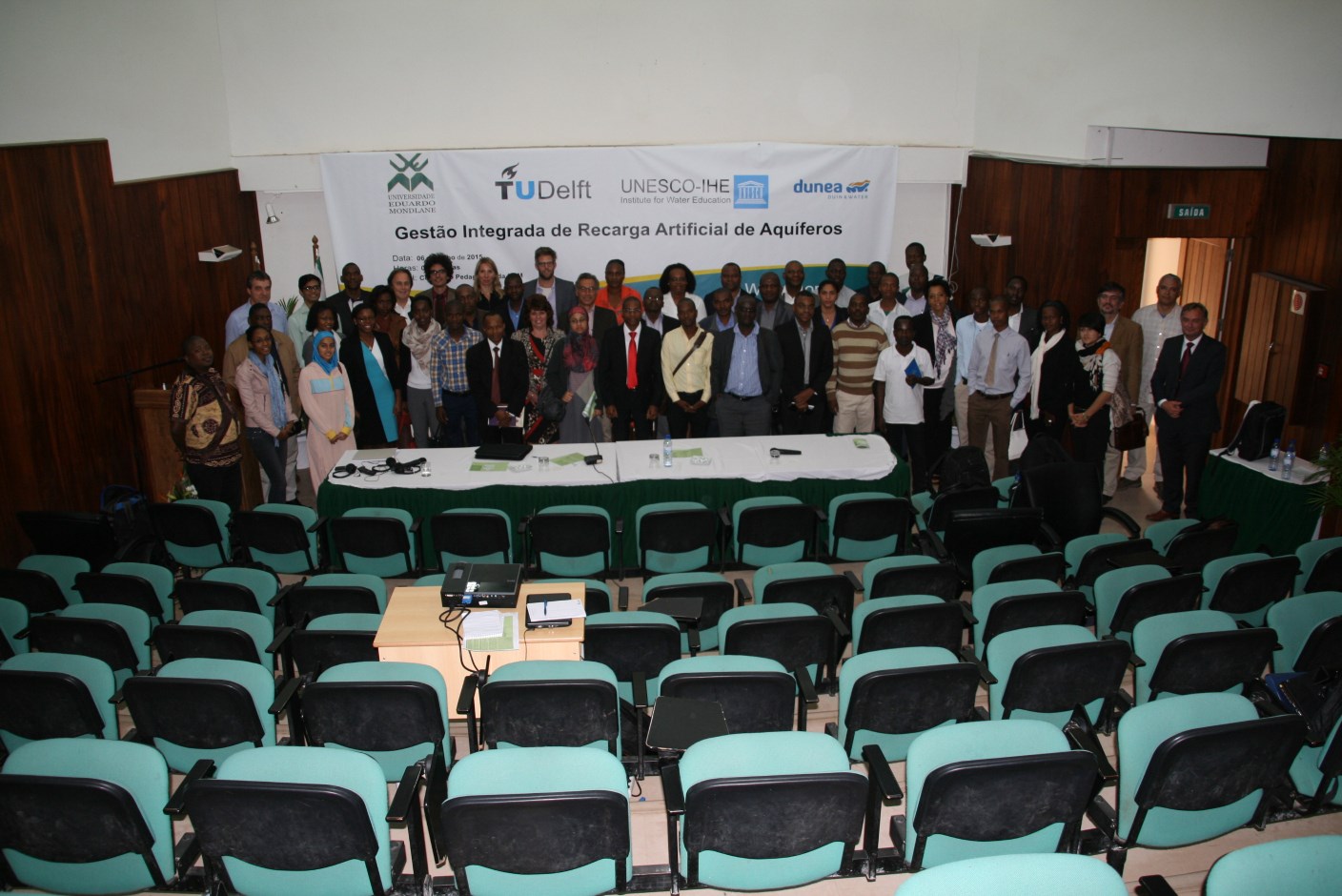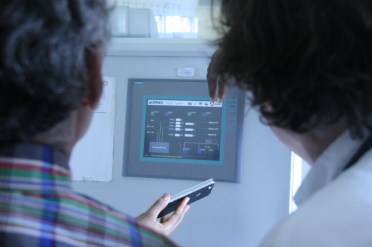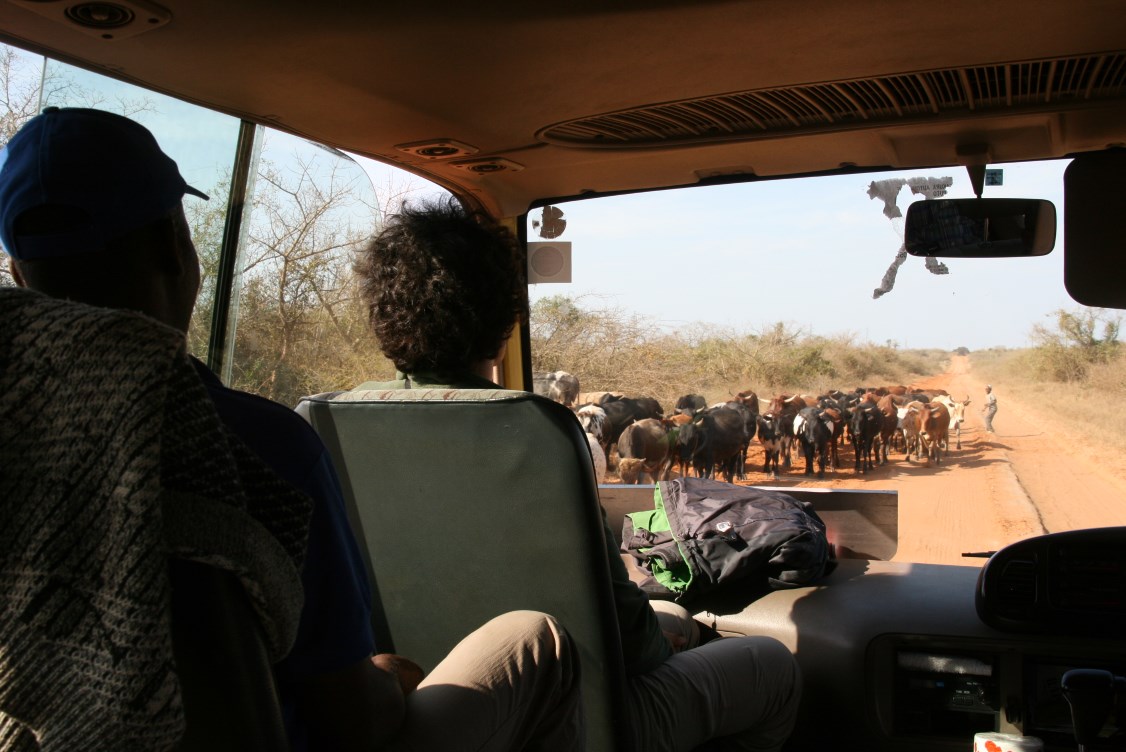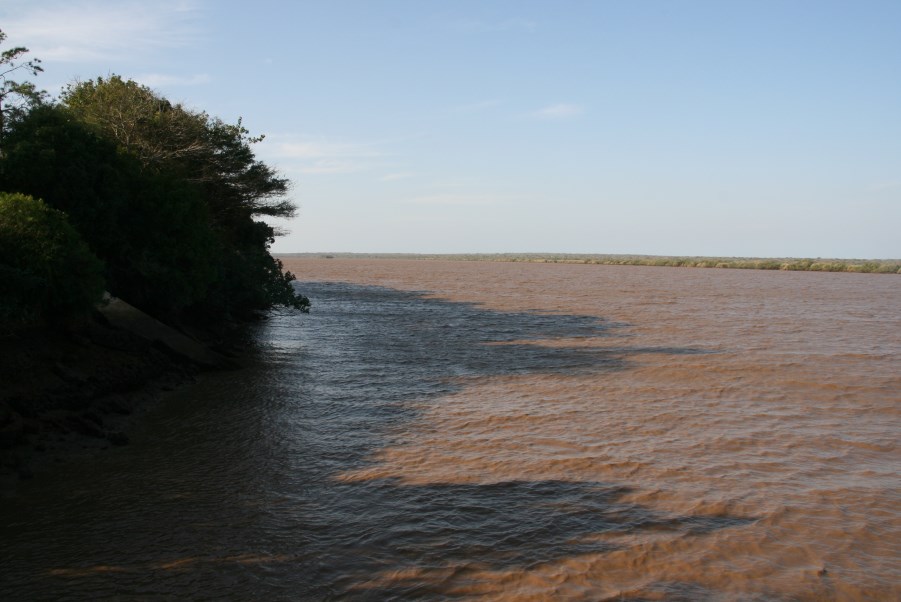by André and Paul Loth (Dunea)
As I wrote before, we organized a workshop in Maputo on the 6th of July, together with Unesco-IHE, Universidade Eduardo Mondlane (UEM) and Dunea, to present the Integrated Managed Aquifer Recharge Concept (IMARC). Since the 1950-ies Dunea applies Managed Aquifer Recharge (MAR) in the coastal dunes of the Netherlands, now providing 1.3 million people with high-quality drinking water. Dunea’s area of operation is around Scheveningen in the West of the country, close to The Hague. Dunea gradually added nature conservation and recreational use as a prototype IMARC – the protected dune areas around Scheveningen yearly receive one million recreational visitors. In the case of Mozambique, we see IMARC as a way of preventing saline intrusion, already a serious issue in some areas of Maputo, while protecting the environment.
For the workshop UEM provided a large and comfortable auditorium and logistic support. UEM also arranged simultaneous translation, which allowed the participants who did not understand Portuguese to follow the presentations and the plenary discussions without problems. We are indebted to UEM for the invaluable support given in organizing the workshop, without them the workshop would not have been such an outstanding success.

Ruben Wentink (Dunea) following the workshop.
THE WORKSHOP
The main objectives for the workshop were:
- Present the Integrated Managed Aquifer Recharge Concept (MARC) to the people in Maputo and discuss how it can be applied in Maputo, or elsewhere in Mozambique;
- Involve as much as possible government organizations, NGOs and private companies in the project; and
- Receive input from workshop participants in order to improve the proposal to be submitted to NWO.
Based on these objectives the workshop was a great success. More than 70 people participated, who were knowledgeable on problems affecting water, sanitation or water resources availability in Maputo and Mozambique. Among the institutions that participated were Direcção Nacional de Águas, Águas da Região de Maputo, ARA Sul, WeConsult, WaterAid, Pamodzi, Wsup, World Bank, African Development Bank, Usaid-Suwasa, Unicef and Undp to name a few.

The group photo at the end of the day. In total we had more than 70 participants throughout the day.
In the morning there were several presentations covering technical, social, environmental and economic aspects of IMARC. The session was opened by Antje van Driel of the Royal Embassy of the Netherlands in Mozambique. Luuk Rietveld (TU Delft) followed with an introduction on the Urbanizing Deltas of the World II call and introduced the concept of IMARC. Then Eefje Dekkers and Hein de Jonge (Dunea) demonstrated how managed aquifer recharge enabled the company to provide high-quality drinking water for the last 60 years whilst safeguarding the environment. UEM and ARA Sul sketched the situation in the Maputo region. Fátima Mussa (researcher at UEM and PhD candidate at Unesco-IHE) presented her research on characterization of the aquifers North of Maputo, and Lizete Dias (ARA Sul) explained how her organization manages groundwater systems in the South of Mozambique. Gildo Timóteo then talked about the role that Águas da Região de Maputo plays in supplying drinking water to a great part of the population in the city. To finalize Marcos Pereira of Centro Terra Viva discussed the social and economic importance of the Mozambique’s coastal ecosystems, and Francisco Nostado, a member of Amati, enlightened us how a small-scale independent water provider operates. All these thought provoking presentations were followed by lively discussions.
NOTE. If you wish to get a copy of the presentations given on during the workshop you can contact André directly (a.marquesarsenio@tudelft.nl).


Colourful brainstorming during the workshop and finalizing a Post-it-powered SWOT analysis back at home.
In the afternoon the participants did, in two groups of about 30 people, either a stakeholder analysis, or defined approaches for research uptake. The stakeholder analysis followed the Alignment, Interest and Influence Matrix methodology in which relevant stakeholders were first identified and then positioned in a matrix according to their (assumed) interest in the issue being addressed (saline intrusion and water scarcity) and their alignment with the proposed solution (IMARC). This surely was a great exercise and we got much insight from the discussion. In the session over the Theory of Change participants were asked to enumerate inputs, outputs and outcomes to the project. At the end of the day we had the pleasure of having Dinis Juízo, Professor of Hydrology at UEM, closing the day.

Dinis Juízo (UEM) closing the workshop on Monday.
THE STUDY-TRIPS
The idea for these study-trips was visiting areas where IMARC could possibly be implemented. These were typically sandy areas, where groundwater is present and near a river as the water source. We identified two likely areas, one North of Maputo, near Marracuene (River Incomati), and the area South of Catembe, near Bela Vista and Salamanga (River Maputo). With this in mind we visited the dune areas North of Maputo on Tuesday, with Dinis Juízo (UEM) showing us locations where he did field-work back in 2007.


Reading the hydrological of Mozambique map somewhere near Marracuene.

The dune area close to Marracuene.
On Wednesday we started our day by visiting the water treatment plant of Águas da Região de Maputo (AdRM) in Boane (about 40 km SW of Maputo). The plant produces about 240,000 m3 of drinking water per day to supply the Greater Maputo Area from water abstracted from the Umbeluzi River. We were guided by Gildo Timóteo from AdRM who showed us all the treatment processes still operational and those that are out-of-service. The visit was really worthwhile and we thank the people at AdRM for having us.


Visit to the water treatment plant of AdRM.
Afterwards we drove to Bela Vista (E/SE of Boane) to see the River Maputo guided by Moisés of ARA Sul. This region is very beautiful and wild, with mangroves completely covering both banks of the river. The river itself seemed to be salty and with very high concentration of suspended solids – future work will show whether the river is a good water-source for IMARC. In the map the itinerary seemed straightforward – 60 km from Boane to Bela vista and 40 km, heading north, from Bela Vista to Catembe. However, this trip took us more than 8 hours and before getting home we still had to wait for 6 hours for the ferry-boat in Catembe – the crossing itself took less than 20 minutes. Nevertheless, Catembe had a very good vibe and time flew by. The future bridge (Maputo-Catembe) will certainly address this problem and will make travelling much faster. Meanwhile the Municipality is expecting more than 400,000 people in Catembe in the next 30 years and this will surely put additional pressure on the already limited water resources in the region. Can IMARC be the answer? We surely believe so.
 Road traffic on the way to Bela Vista.
Road traffic on the way to Bela Vista.

View of the River Maputo at Bela Vista. Future work will show whether this is a good water source for IMARC.
FINAL THOUGHTS
The workshop and the field-trips were a huge success with more than 70 people participating throughout the three days. This clearly shows that Mozambicans are acutely aware of the risks of water scarcity and saline intrusion, with many government organizations, NGOs and local consultants participating in the workshop, giving presentations, guiding us in the field-trips and showing interest in actively participating in the future project. After the workshop we are confident that IMARC will be readily accepted in Mozambique as a promising technology embedded in sustainable approaches, and that everyone is eager to start working with us implementing the first pilots. To demonstrate the social, technical and economical relevance of IMARC we received several support letters and have included three Mozambican partners, WeConsult, Direcção Nacional de Águas and ARA Sul, as co-applicants of the NWO-grant.





















Pingback: AdeM’s war on water losses | Sustainable freshwater supply in urbanizing Maputo, Mozambique